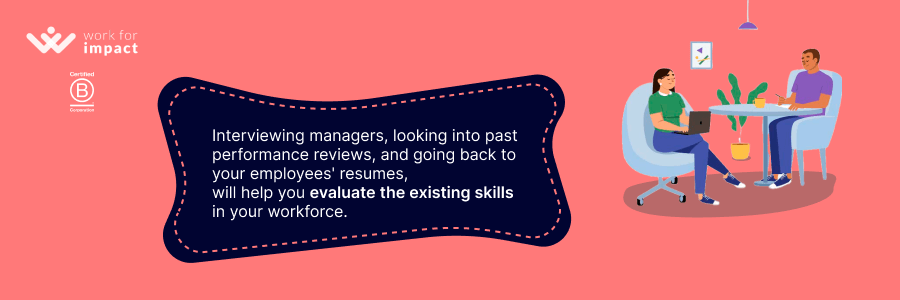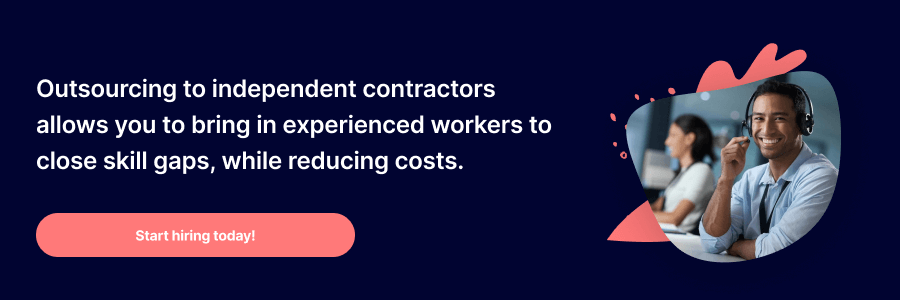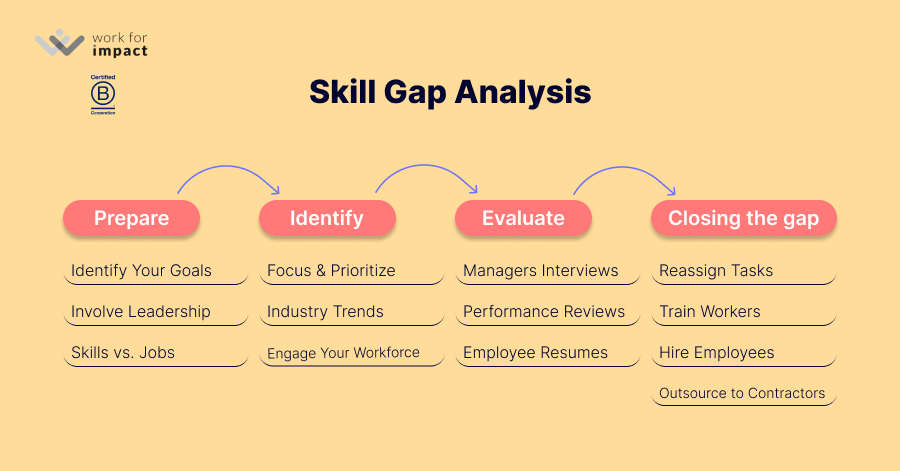What is a skill gap analysis?
Skill gap analysis is the process of evaluating a company's current workforce skills against the skills needed to achieve its goals. It includes tasks like explaining, planning, and figuring out how to close any gaps.
Businesses periodically adjust their goals to adapt to evolving and competitive markets. Ensuring that our workforce has the necessary skills to hit those goals is vital.
This is a comprehensive guide on what a skill gap analysis is.
Contents
Preparing a skill gap analysis
Before initiating a skill gap analysis, thorough preparation is crucial. This ensures a smooth process and helps prevent any potential setbacks.
Identify Your Business Goals
It is vital to have a clear understanding of your company's goals. Whether they are short-term, mid-term, or long-term. This information will serve as a guiding force throughout the process. It will help us to identify significant gaps and take appropriate action.
Involve Your Leadership
Engage with the leadership of your company. Clearly articulate what you intend to do, why you are doing it, and the anticipated outcomes. Once the process begins, there should be no doubt about the nature and purpose of a skill gap analysis.
Effective internal communication is key. Whether you are part of the HR team or a manager seeking to improve performance.
Skills vs. Jobs
All stakeholders should understand that the focus is on skills, not roles or jobs. Everyone should know this before beginning the process.
This is not about laying off employees. It's about evaluating whether our teams have the necessary skills to hit the company's goals. And finding effective solutions to bridge any identified gaps.

Identify the Necessary Skills to Hit your Company's Goals
You must understand the skills that are key to hitting your company's goals. This will allow you to uncover existing or potential gaps. Here are some effective recommendations:
Focus on What's Important
At times, all it takes is asking. Engage with directors and managers. Inquire about their most challenging goals.
Understand which missing skills would have the fastest and most significant impact. It's crucial to guide them in prioritizing and defining specific skills.
The Future of Your Industry
Conduct thorough research into your company's industry. Learn about trends and challenges. And project how the industry will evolve in the next 5-10 years.
Analyze this information. Explore the skills that will position your company as a key player in the future.
Talk to Your Workforce
Get in touch with your company's employees. Prioritize areas that have a greater impact on business goals. You can engage them directly through meetings and interviews or conduct surveys.
Ask them about the skills that would enhance the ease and efficiency of their work. Collecting this firsthand feedback is immensely valuable. You'll be able to compare it with the insights provided by managers and senior leadership.
Evaluating existing skills in your workforce
At this point, you should have a clear understanding of the skills needed to hit your company's goals. You'll need to take the next step for a successful skill gap analysis. Assessing the existing skills in your workforce.
You can gather this information through:
Interviewing Managers
Engage with managers across various areas of your company. Prioritize based on their impact on business goals. Review the employees they oversee and collect direct feedback on their skills.
This conversation should not only provide "Yes/No" answers. It should also involve a qualitative assessment of each skill.
Performance Reviews
Regular performance reviews offer several benefits. Like access to a historical database detailing past projects, strengths, weaknesses, and skills.
Previous projects could have provided valuable experience. And skills that may be relevant again.
Employee Resumes
Sometimes, you need to go back to the basics. Your employees' resumes can provide lots of valuable information.
They may have used skills currently essential for our company, in other jobs. A well-crafted resume also provides insights into degrees, training, and overall education.

Closing the skill gap
The skill gap analysis is complete once you compare the necessary skills to hit your company's goals and the skills within your workforce. You will now have a clear picture of the existing gap. It's time to explore solutions.
Here are four ideas to address the skill gap:
Reassign Tasks
Some missing skills might actually be located in other projects or tasks. Reassigning responsibilities can be challenging. But clear and transparent communication can make it a welcomed change.
There may be workers with experience or qualifications related to the missing skills. This could present a growth opportunity for them. And an efficient solution for the company.
Train Workers
Another solution is training our workforce in some of the missing skills. This could be an interesting approach, as long as the training is relevant to their areas or roles.
This approach can be positively received by employees as it adds new skills to their toolkit. However, it's important to consider that this process will take time. And after completing the training there might be a lack of practical experience in the field.
Hire New Employees
If you need people with experience, hiring new employees can be a convenient solution.
You can start a selection process outlining the required expertise. You can look for specialized profiles. And you can establish the desired years of experience for the role.
The drawback to this option is that the selection process can be time-consuming. And it can also be resource-intensive. Bringing on new full-time employees can also have a significant impact on your budget.
Outsource to Independent Contractors
Last but not least, consider outsourcing to independent contractors. This option allows you to bring in experienced workers to address the identified skill gaps.
At Work for Impact, we have a remarkable base of talent. Fully vetted independent contractors from 185+ countries. We assist you in finding, hiring, and managing global talent. Without pushing for lengthy and complicated contracts. As a certified B-Corp, we conduct all operations ethically and transparently.
You can create a free account and start hiring here, or schedule a short demo here.

How Often Should You Conduct a Skill Gap Analysis?
Skill gap analyses should be performed at least once a year. It's not recommended to repeat this process too frequently. Seeing tangible results may take some time. However, waiting for years is also not advisable. It might lead to missed opportunities for swift adjustments. Once the skill gap starts to widen, closing it becomes more challenging.
Companies and their goals evolve, change, and readjust quickly. Skill gap analyses should be carried out periodically. To provide prompt and efficient responses to these evolving needs.

